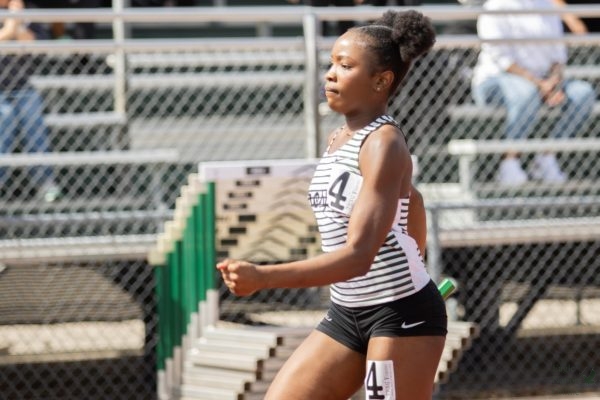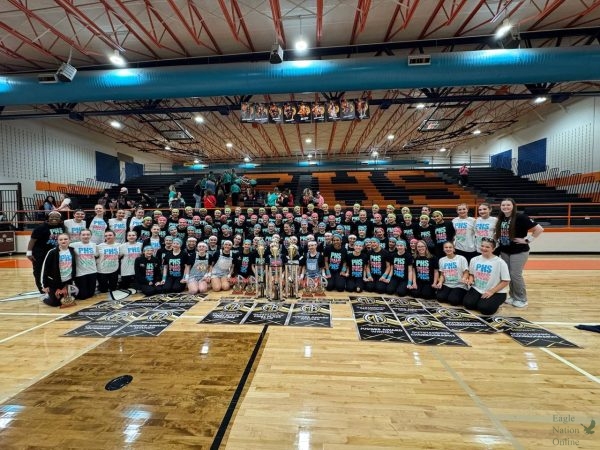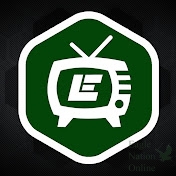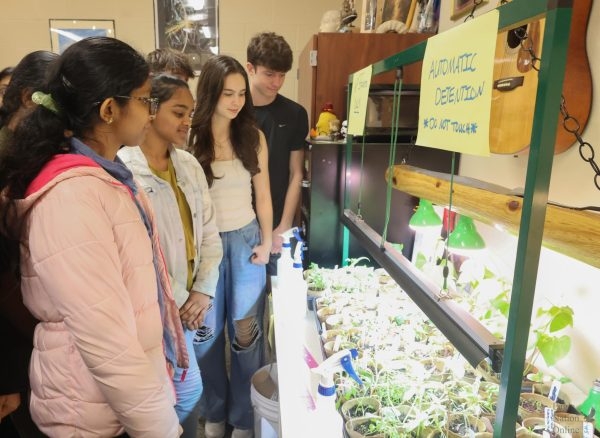Future Ready Space provides opportunities for students, accepts donations
A 3D printer sits inside the new “makerspace” of the renovated Future Ready Space, previously known as the library. The “makerspace” provides tools and resources for students to use, such as a 3D printer, Cricut machine, and woodworking tools. “These are the tools that students are going to need someday,” Director of Instructional Technology Patrick O’Neil said. “We’re making them available now in a safe environment where they can learn to use them in ways that make sense to them.”
Inspired by a podcast and a thinking exercise, library and technology directors Leah Mann and Patrick O’Neil brainstormed how to infuse a “makerspace” into the school’s traditional library model. They toured countless fabrication labs and “makerspaces” and spent hours developing ideas, tools and resources. Mann and O’Neil’s dreams first turned into possiblities, and now, they have materialized into reality. Nine months after the beginning of a simple idea, students are already completing projects in the school’s Future Ready Space.
To create an interactive space for students to hang out and explore, the district remodeled the library into the Future Ready Space and now accepts donations to provide school materials for students. The Future Ready Space provides tools and works as an interactive space for students to do whatever they need to do. A main feature of the new area is the “makerspace,” which contains a 3D printer, woodworking tools and more. The space is currently open but is still undergoing a few renovations and finishing touches. Designers predict the work will be done in a couple of weeks.
“Our main goal is to just let students explore things that are interesting to them and kind of find their passion,” Future Ready Designer Jenna Hutt said. “Whether that’s using design tools or using research tools or reading novels. All different kinds of information we want you to be able to find and explore in here.”
Hutt works as a Future Ready Designer, a new position at the school, with Ryan Miller. As far as changes to the space go, Hutt said the biggest change would be that the Future Ready Space works as a more independent model than the old library.
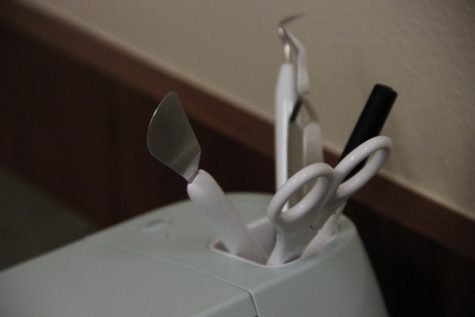
“We will have self-check-in and self-checkout once we get that up and running in the next few weeks or so,” Hutt said. “Right now, because of COVID, we are offering a concierge service where students can request books, and we’ll deliver them to their English classroom. We want this to be more of a collaborative space. Come in with your friends to work on things together, group projects, even just to relax and explore new tools and things that are interesting to you.”
Hutt and Miller don’t want the Future Ready Space to only be a ‘quiet library.’
“The idea is that it looks less like a quiet place to read a book and study, and more of a collaborative place where anybody can learn or do anything,” Miller said. “We still have a really large library collection. We’re still here to help with literacy and research and things like that. We also want the space to be usable by everybody.”
The space still has books for students, just not as many physical books, which will reduce contact between readers while the district tries to prevent the spread of COVID-19.
“We’re moving more towards the digital collection,” Hutt said. “We are adding in the component of ‘Makerspace,’ which is in the process of being set up. It has lots of design tools, technology tools that you, as students, will be able to explore and use.”
Students can find the digital book collection at Sora by Overdrive.
“There are audiobooks and eBooks found there, and it’s a super easy to use platform,” Hutt said. “You can get to it through the portal and you can download it in an app on iPhone and Android.”
The “makerspace,” will be available for teachers and students to use.
“The ‘makerspace’ is a space to make,” Miller said. “The idea is that we have collaboration tables in the middle. We’re also getting sawhorses to put all the woodworking stuff on. We’ll have a kiln, so we’re firing pottery and stuff like that. We have sewing machines and embroidery in the back and then a 3D printer.”
The ‘makerspace’ will also include a Cricut, a laser system, a raspberry pi, little bits and Arduinos. While the Future Ready Space is currently open from 8 a.m. to 4:15 p.m., some finishing touches are still to come.
“We want to update our signage to make it more user-friendly, and we may get a little bit more furniture,” Hutt said. “The biggest thing is getting our ‘makerspace’ ready, just getting all our tools. We’re still waiting for a few deliveries on some tools, but getting that just up and running and organized.”
Hutt said she wants to have enough materials on hand to allow every student to try at least every tool available one time.
“We have some campus budget money that we can buy some supplies with,” Hutt said. “We’re also going to apply for a Prosper Education Foundation grant to cover some of those supplies because we want every student to have an opportunity to explore this space, and we know some students may not be able to buy things, so we want to be able to provide it.”
To fulfill this goal, the Future Ready Space is accepting donations from students, staff and the community. The materials they accept include wood and woodworking supplies, fabric and sewing supplies, vinyl and Cricut supplies, metal sheets, and arts and craft supplies.
“Any kind of craft supplies (can be donated),” Hutt said. “That can be arts and craft supplies such as paints and paint brushes, clay, things like that. Anything that’s woodworking or tool donations, even scraps of wood. It doesn’t have to be full pieces. We have hand tools and power tools, so we would love to provide scraps of stuff.”
Donations of both new and used materials are accepted, and the Future Ready Space will accept donations year-round.
“We’re going to start calling local businesses and let them know, ‘if you want to donate, we’re happy to advertise your business for you,’” Hutt said. “So we’re hoping to get some donations that way as well.”
The idea of the Future Ready started in the fall of 2019, almost a year ago and started with the ideas of Leah Mann and Patrick O’Neil.
“Making things has always been something I am very interested in, but it took getting to know my colleague Dr. Leah Mann last fall to realize everything that could be done,” O’Neil said. “Dr. Mann wrote her doctoral dissertation on ‘makerspaces’ and design thinking, and she has taught me a lot.”
O’Neil works as the Director of Instructional Technology and was previously the school’s instructional technology coach.
“Years ago, when I was the PHS Instructional Technology person, I briefly worked with the person who was the librarian at the time to try to create a true ‘makerspace’ in the library, but our plans fell through,” O’Neil said. “We were unable to complete it, because at the time, we did not have a teacher to run the space.”
In the fall of 2019, Mann and O’Neil brainstormed on how to convert the library to a space where students could create projects to enhance their classwork.
“We toured fabrication labs and ‘makerspaces’ around the metroplex, and used what was observed to make a dream list of resources and develop ideas for their integration into the different subject areas,” Mann said. “My part, along with Mr. Patrick O’Neil, was to also help locate and procure the various tools and resources.”
According to Mann, the idea was inspired by a thinking exercise done in the Instructional Media department.
“It was inspired by a podcast by Adam Grant who is an organizational psychologist,” Mann said. “Following his model, we thought of our department and the roles within the department as a corporation, and considered what competition could lead to our corporation no longer being in business.”
They realized that they wanted to focus on design thinking, fabrication and computational thinking as extensions of information literacy, and make it important to all content areas.
“This led us to identify areas where we could transform how we offer our services to students and teachers through embedded making and design,” Mann said. “After sharing our thinking with Dr. (Holly) Ferguson, the Future Ready Designer and Future Ready space were born.”
Mann and O’Neill brought the idea to principal Dr. John Burdett and superintendent Dr. Holly Ferguson, who were supportive of the proposal.
“The next step was to find our Future Ready Designers, Mrs. Hutt and Mrs. Miller,” O’Neil said. “They are the key to all of this, amazing educators who can be present in the Future Ready Space almost every day. Once we got them onboard, the Future Ready Designers took the ball and ran with it.“
The Future Ready Designer position works as a combined role of the campus librarian, Hutt’s old job, and the Instructional Technology Coach, Miller’s old job.
“All of the furniture redesign that you see, the tools in the ‘makerspace,’ everything has been led by them,” O’Neil said. “I feel extremely lucky to get to work with two educators who can take the kernel of an idea and, with the help of their principals and students, turn it into such an amazing thing.”
Hutt and Miller had the opportunity to pick all the new furniture and color scheme, brainstorm the tools they wanted, and create their own vision for the space.
“Ms. Hutt and I were very blessed. We got to be included and involved in every single thing,” Miller said. “We created the sketch up for what this space looked like. We were limited by budget, but we have touched everything in here. We’ve been involved in the ground level up.”
O’Neil said he thinks of the Future Ready Space as a “beta program,” and if it works well, he hopes to have more in other district schools.
“We have drawn a lot of our inspiration from how companies like Google roll out new products,” O’Neil said. “They come up with an idea, test it in a smaller setting, then see if it will work in a larger setting (maybe other schools in PISD someday). We know it is not going to be perfect in its first iteration, but we have the talent in place — Mrs. Hutt and Mrs. Miller, the Talon Tech students, and all of the other PHS students — to be sure that it will constantly evolve and become even better.”
O’Neil wants the Future Ready Space to provide opportunities and tools to students that they only would have gotten from electives and career-and-technology classes.
“These are fantastic courses, and I am very happy to get to work in a district where we can make so many amazing electives available, but not every student can fit them into their schedule,” O’Neil said. “These are the tools that students are going to need someday. We’re making them available now in a safe environment where they can learn to use them in ways that make sense to them.”
Mann said these tools may help students find new passions that they would not have found otherwise.
“The Future Ready Space provides equitable access to real-world and industry-level tools, helping all students gain important life skills, identify passions, and prepare for a future that is yet to be explored,” Mann said. “Who knows, an experience in the space could lead a student on a career and life path that allows them to create the next life-changing device or invention. Imagine that.”
Your donation will support the student journalists of Prosper High School. Your contribution will allow us to purchase equipment and cover our annual website hosting costs.
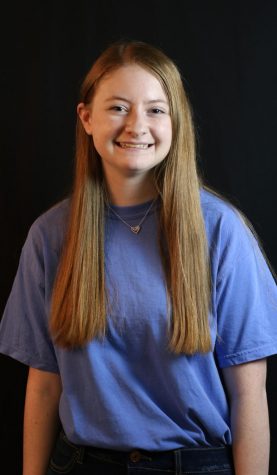
Honors & Awards:
2022 TAJE Texas Journalist of the Year
2019, 2021 UIL State Headline Writing Champion Runner-Up
2022 UIL State Meet: 3rd place Headline Writing, 4th place News Writing, 7th place Editorial Writing
UIL Headline Writing Regional Awards:
2019: 2nd place
2020: 2nd place
2021: 3rd place
UIL Editorial Writing Regional Awards:
2020: 2nd place
2021: 4th place
20 Best of SNO publications
2021 National NSPA Story of the Year Honorary Mention
2021 National NSPA Top 10 Best of Show Podcast
2021 TAJE Best of Texas: Excellent Story Portfolio, Superior News-Feature Story, Honorable Mention Headline Writing
2021 TAJE Fall Fiesta: Superior Headline Writing, Superior Interview Podcast, Excellent Video News Story, Excellent Video Feature Story
2022 TAJE Best of the Best: 3rd place Online News Portfolio
2022 TAJE Best in Texas: Excellent Interview Podcast, Superior Story Portfolio, Honorable Mention News Story, Honorable Mention Feature Story, Excellent In-Depth Package, Excellent Entertainment Feature, Excellent Headline Writing
2022 NSPA Best of Show: 7th place Editorial Board Leadership, 4th place Podcast
2022 ILPC 6A Awards: 2nd place Sports Feature Story, 3rd place Feature Writing, 3rd Place Entertainment Review, 1st Place In-Depth News/Feature Package, 1st Place Photo Slideshow, 1st Place Video Story, 1st Place Multimedia Package, Honorable Mention Portrait, 3rd place Headlines
2022 Tops in Texas Awards: Photo Slideshow, Multimedia Package
2021 TAJE Student Advisory Council Member
2020-2022 PHS Newspaper Student of the Year
NSPA Student Journalist National Honor Roll
Quill and Scroll Honor Society Member





